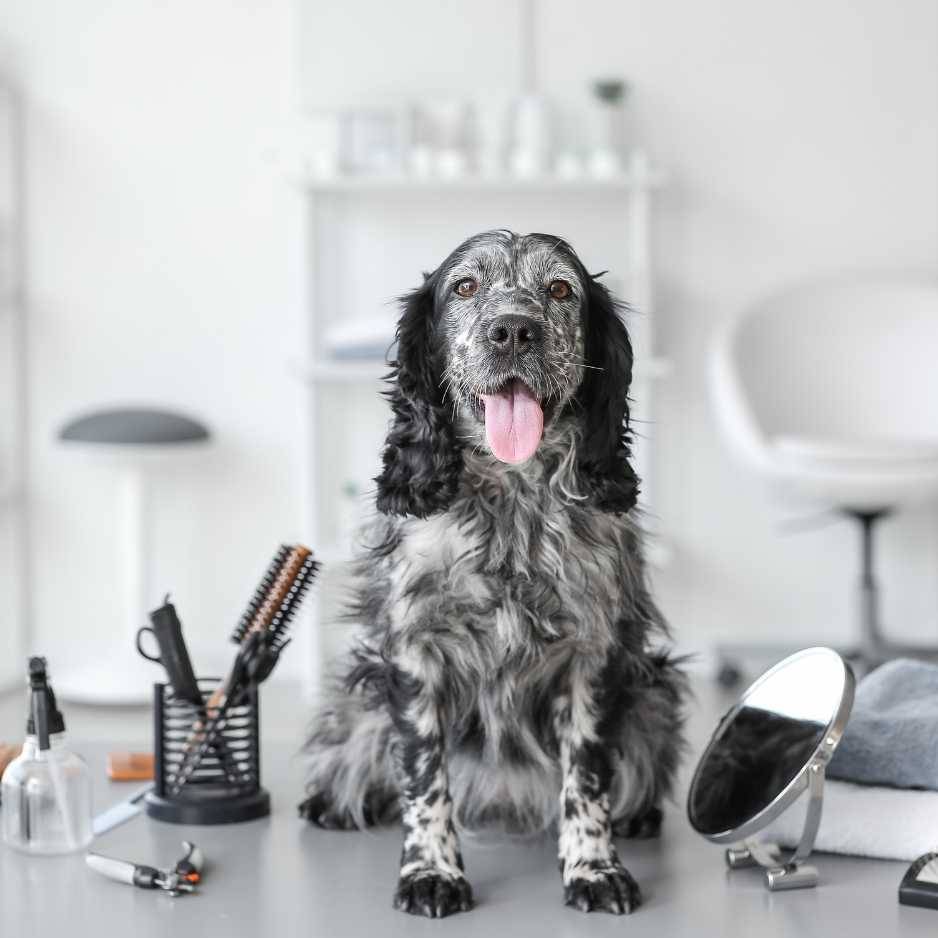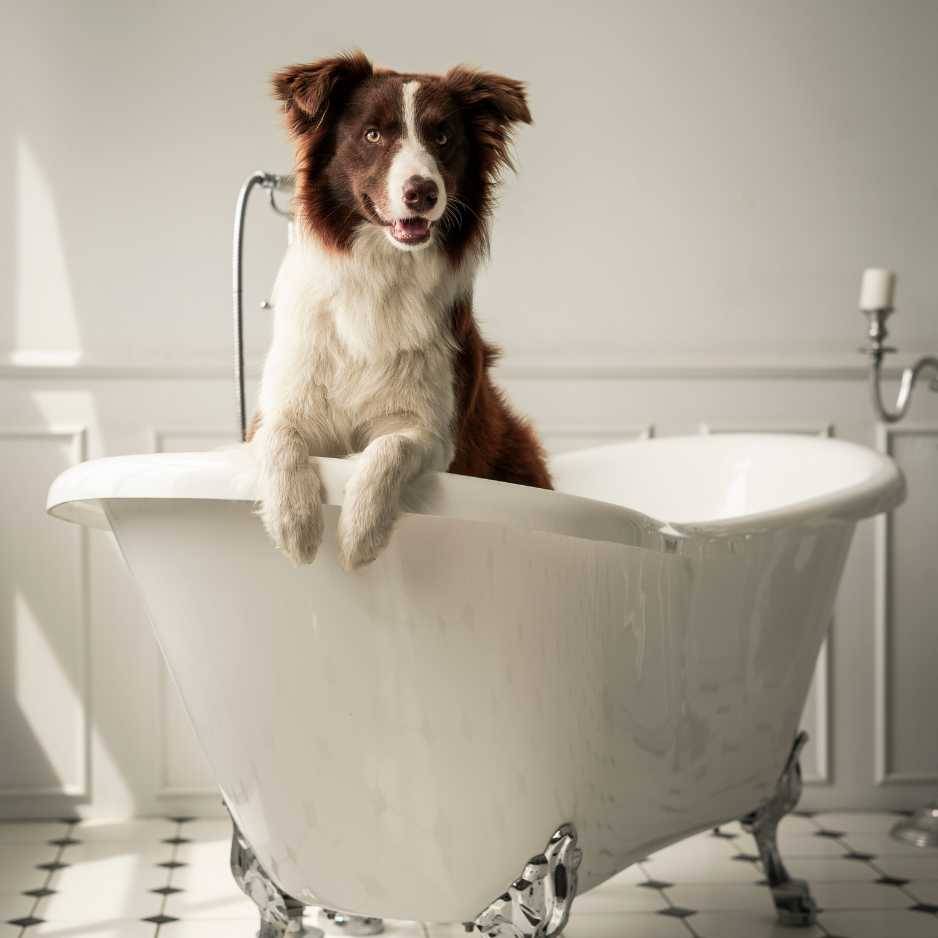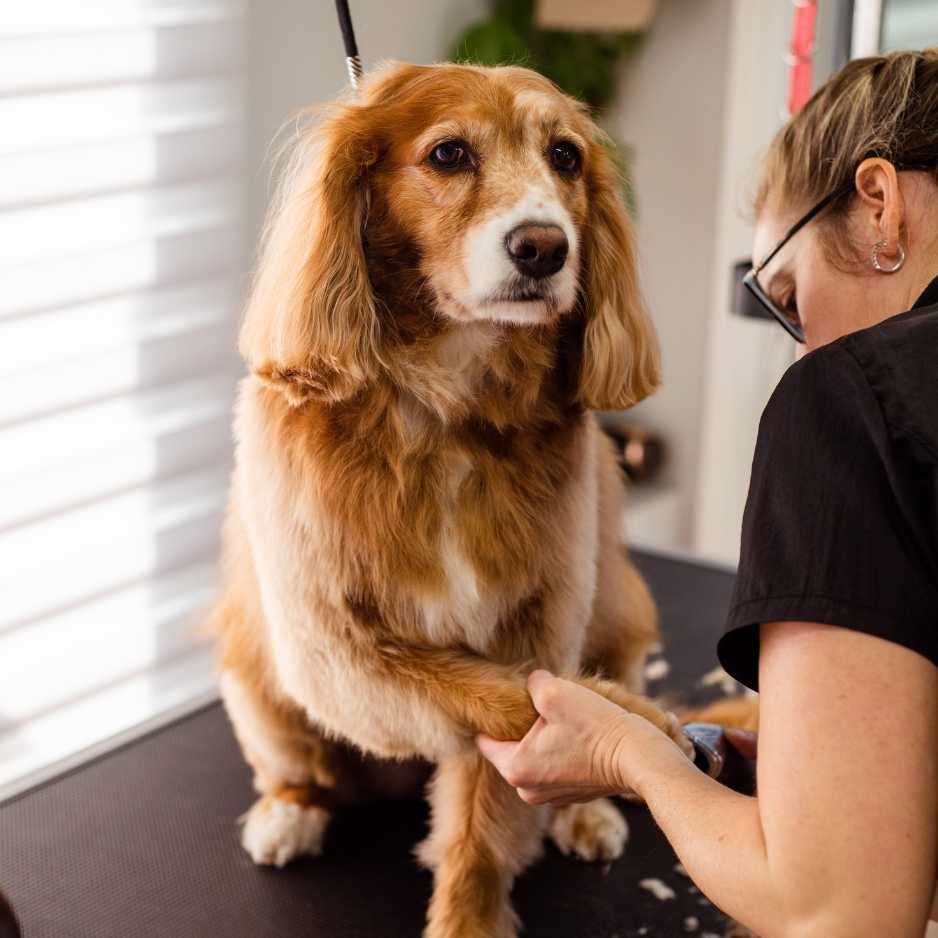How to Groom Your Dog at Home

Grooming your dog at home can be a rewarding experience, strengthening the bond between you and your furry friend. It’s more than just maintaining a clean coat—it’s about ensuring your dog’s overall health and well-being. In this guide, we’ll walk you through everything you need to know about grooming your dog at home, including tips many pet owners may not know about.
Why Grooming Your Dog at Home is Essential

Home Dog Grooming is often viewed as a money-saving alternative, but its benefits go far beyond that. Here’s why you should consider grooming your dog at home:
- Reduced Stress for Your Dog: Many dogs experience anxiety at professional grooming salons. Grooming at home in a familiar environment can make the process less stressful for them.
- Regular Health Checks: When grooming, you can perform quick health checks. Check for lumps, skin irritations, or parasites that may go unnoticed otherwise.
- Strengthening Your Bond: Regular grooming sessions are a chance to build trust and deepen your connection with your dog.
Essential Grooming Tools You Need

Before you start, make sure you have the following dog grooming tools:
- Dog Shampoo and Conditioner: Using human shampoo can dry out your dog’s skin and upset their pH balance.
- Slicker Brush or Deshedding Tool: Depending on your dog’s coat type, you’ll need a specific brush to manage shedding.
- Pet Nail Grinder or Clippers: A nail grinder is a safer option for beginners as it reduces the risk of cutting the quick.
- Ear Cleaning Solution and Cotton Balls: Clean your dog’s ears regularly to prevent infections.
- High-Velocity Dryer: Many don’t realize that a high-velocity dryer can speed up drying time and blow out loose fur, making it a hidden gem in the grooming toolkit.
Step-by-Step Guide to Grooming Your Dog at Home
Step 1: Brushing

Regular brushing is the foundation of DIY dog grooming. It helps remove loose fur, prevents matting, and distributes natural oils through the coat.
- Short-Haired Dogs: Use a rubber curry brush to remove loose hair.
- Long-Haired Dogs: A slicker brush followed by a comb is ideal. Pay extra attention to areas prone to tangles, such as behind the ears and under the legs.
- Pro Tip: For dogs with double coats, use an undercoat rake to reach the dense underlayer and prevent shedding around the house.
Step 2: Bathing

Bathing your dog can be a messy task, but with the right approach, it becomes manageable.
- Choose the Right Shampoo: Pick a hypoallergenic or oatmeal-based shampoo for dogs with sensitive skin. If your dog has itchy skin, consider a medicated shampoo recommended by a vet.
- Water Temperature Matters: Lukewarm water is ideal. Hot water can cause burns, while cold water can be uncomfortable.
- Start with the Body: Apply shampoo to the body first and the head last to avoid getting water in their ears. Always rinse thoroughly, as leftover shampoo can cause skin irritation.
- Pro Tip: Use a silicone bathing glove to massage the shampoo into your dog’s coat. It helps remove dead skin cells and gives your dog a mini massage.
Step 3: Drying

Drying is an overlooked step, but it’s crucial, especially for long-haired breeds.
- Towel Dry: Start with a towel to remove excess water. Be gentle to avoid tangling the fur.
- High-Velocity Dryer: A hidden trick among professional groomers is using a high-velocity dryer to blow out moisture and loose fur. This dryer is especially effective for thick coats.
- Pro Tip: Use a leave-in conditioner spray for dogs with longer coats. It helps prevent tangles while drying.
Step 4: Nail Trimming

Trimming your dog’s nails can be intimidating, but it’s essential to prevent overgrown nails that can cause pain and affect your dog’s gait.
- Use a Nail Grinder for Safety: A grinder gradually wears down the nail, reducing the risk of hitting the quick. It’s especially useful for black nails where the quick is not visible.
- Pro Tip: If your dog is afraid of the noise, let them get used to the sound first without actually trimming the nails. Reward them with treats to create a positive association.
Step 5: Ear and Eye Cleaning

Ear infections are common in dogs with floppy ears, so regular cleaning is a must.
- Ear Cleaning Solution: Use a vet-recommended ear cleaning solution. Avoid inserting anything deep into the ear canal—just wipe the visible part with a cotton ball.
- Eye Cleaning: Use a damp cloth to wipe away tear stains. For breeds prone to tear staining, such as Poodles and Shih Tzus, a saline solution can be helpful.
- Pro Tip: After cleaning the ears, dry them with a cotton ball to prevent moisture buildup, which can lead to infections.
Step 6: Hair Trimming and Cutting

Trimming your dog’s hair at home requires practice, but with the right approach, it can be done safely.
- Focus on Key Areas: Trim hair around the paws, face, and sanitary areas. These spots get dirty quickly and can cause discomfort if left untrimmed.
- Pro Tip: Use blunt-tipped scissors for safety, especially when working around sensitive areas like the face. For long-haired breeds, consider using clippers with guard combs.
Common Grooming Mistakes to Avoid

Even experienced pet owners make mistakes during home dog grooming. Here’s what to watch out for:
- Using Human Shampoo: This can cause skin irritation. Always use dog shampoo.
- Not Brushing Before Bathing: Brushing removes tangles that could tighten and worsen during bathing.
- Cutting Nails Too Short: Take your time with nail trimming, and use a grinder if you’re unsure.
- Skipping Between Paw Pads: Dirt and debris can get trapped between paw pads. Use a small brush to clean these areas thoroughly.
Unique Tips for Stress-Free Grooming

- Create a Grooming Routine: Establish a consistent schedule that aligns with your dog’s breed and coat type. Dogs thrive on routine and will be more comfortable over time.
- Play Calming Music: There are playlists designed specifically for relaxing dogs. Playing these during grooming can ease anxiety.
- Massage Your Dog Before Grooming: A gentle massage can help relax your dog, making them more cooperative during grooming sessions.
- Desensitization Training: Introduce grooming tools slowly. Let your dog sniff them before using them, and reward them for calm behavior.
How Often Should You Groom Your Dog?

How often you need to groom your dog depends on their breed, coat type, and lifestyle.
- Short-Haired Breeds (e.g., Beagles, Boxers): Brush once a week and bathe every 2-3 months.
- Double-Coated Breeds (e.g., Golden Retrievers, Huskies): Brush 2-3 times a week and bathe monthly.
- Curly-Coated Breeds (e.g., Poodles): Brush daily and bathe every 4-6 weeks to prevent matting.
- Pro Tip: Seasonal shedding can require more frequent grooming. Use a deshedding brush during these periods to reduce loose hair.
When to Seek Professional Help

While grooming at home is convenient, there are times when a professional groomer is necessary:
- Severe Matting: If your dog’s coat is badly matted, a groomer can safely remove it without causing pain.
- Breed-Specific Cuts: Certain breeds like Poodles and Schnauzers require precise cuts that may be difficult to achieve at home.
- Skin Conditions: If your dog has skin issues or allergies, consult with a groomer who has experience working with sensitive skin.
Conclusion

Grooming your dog at home is a valuable skill that can save you time, and money, and create a closer bond with your pet. With the right tools, techniques, and a little patience, you can ensure that your dog stays clean, healthy, and happy. Remember, it’s not just about looking good—it’s about feeling good, too. Happy grooming!







































